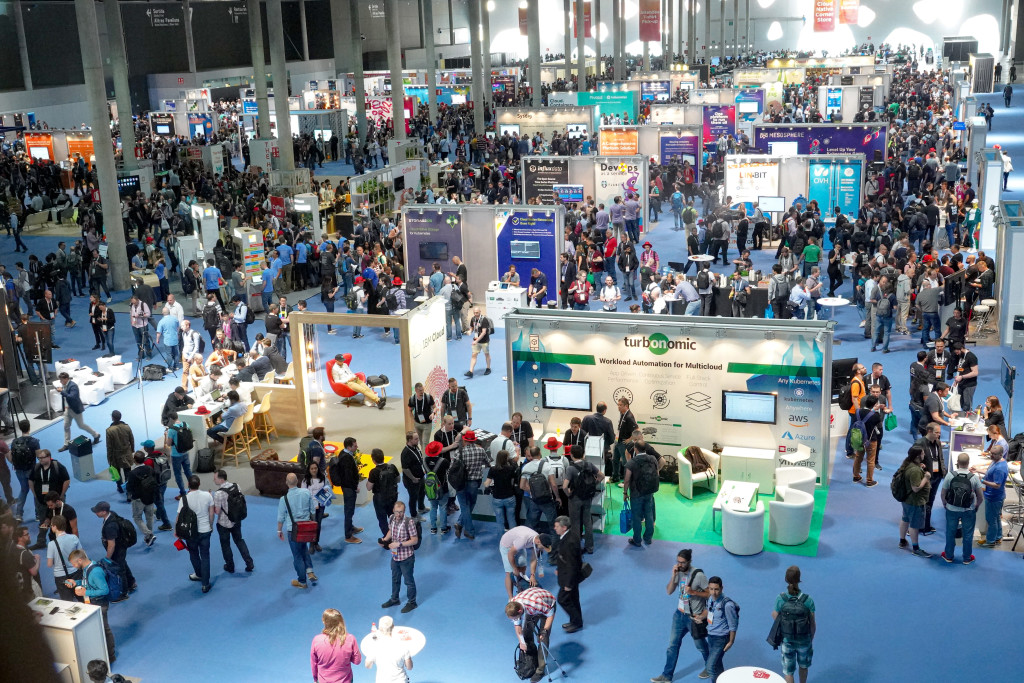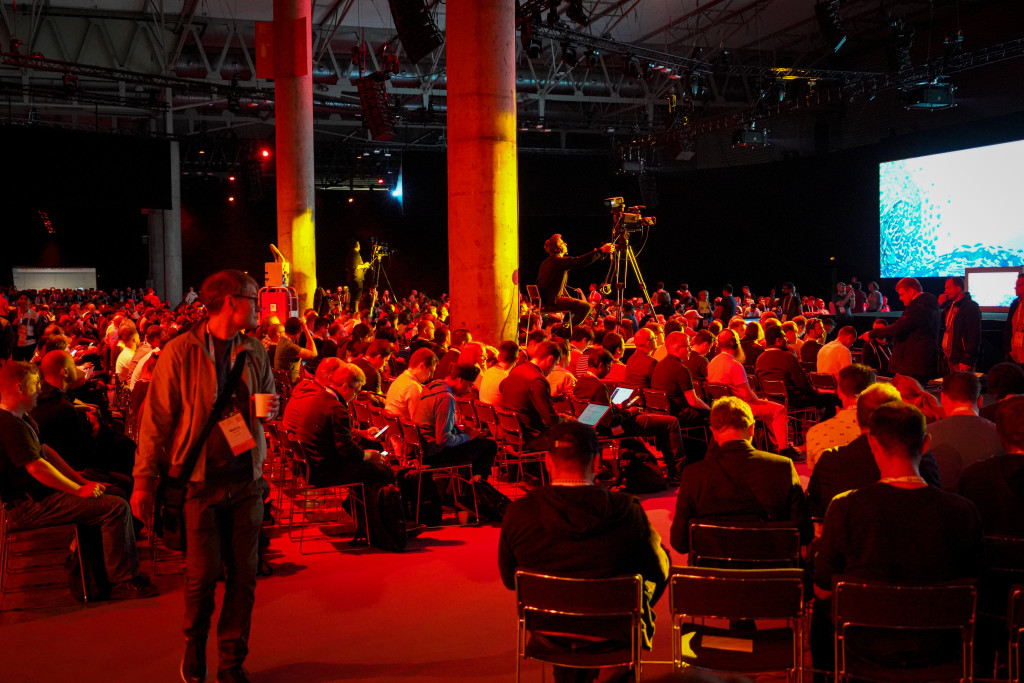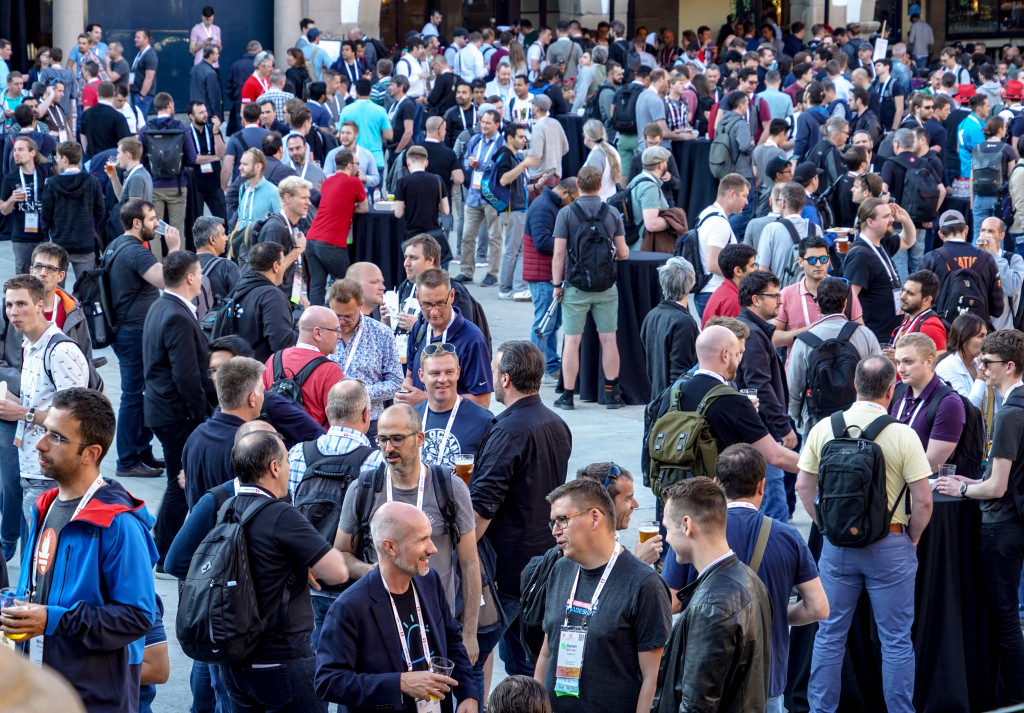KubeCon / CloudNativeCon in Barcelona was amazing. I’ve been hearing great things from my colleagues who have been to past KubeCon, but hearing and seeing are two entirely different experiences.
Excitement
The energy was clearly in the air, reflecting the amount of interest, excitement, innovation, and investment in the cloud native space.
The number of projects that were represented there in some shape or form were staggering. Endless list of “meet the maintainer of the XYZ project,” “introduction to the XYZ project,” or “deep dive into the XYZ project.”
So many people were there, so many talks were offered in parallel. Everyone was trying to absorb what’s going on, and there is simply no way anyone can keep up. Even at lunch tables, conversations were “what interesting things did you see?”
As if that wasn’t enough, at least two significant new projects were launched and announced during keynotes. There must have been 100+ vendors in the exhibit space. Dozen+ co-located events. And numerous private small meetings.
Nobody knows exactly what’s happening, but everybody knows something significant is happening. It’s basically a giant week-long festival for geeks.
Chaos
Just as clear as the energy was how incredibly chaotic the whole scene is. How can you expect otherwise? CNCF has no single command-n-control structure where the entire effort gets planned and coordinated. It’s a group of entities with conflicting interest, acting and reacting to each other.
This chaos was perhaps the most visible in keynotes. Take the Day 2 keynote as an example. First, the host from VMware does his opening and declares that the theme of the keynote is “Kubernetes is a platform for creating platforms.”
Then an SRE from Spotify comes on the stage and proceeds to tell a great story of how they can recover from a major Ops mistake without any visible disruption to customers, except Kubernetes didn’t play any positive role in that story, and the story delivery was so clumsy I couldn’t help but wonder how magical the experience would have been if the speaker did a bit more practice.
The next one on the stage was a VP from Oracle Cloud, and he proceeds to present a strange mix of the ecosystem praise, followed by a marketing video of an Oracle customer (CERN) praising how WebLogic is awesome on Kubernetes. Wait, CERN guys had their own keynote yesterday and there was no mention of WebLogic. And WebLogic on Kubernetes, well, let’s just say that story felt weak. This short Oracle keynote was followed by another end user company, who explained their quite ordinary run-of-the-mill cloud transformation journey but in a beautiful presentation by an eloquent speech. Basically, the complete opposite of the Spotify keynote.
There’s no story arc that connects those 3 segments. None of them have anything to do with the supposed theme of the keynote “Kubernetes is a platform for creating platforms.” There was probably no coordination and not even a concerted effort to push presenters to practice. Just about the only upside is that so many competing vendors working together nicely enough sends a very powerful message.
Compare that with, say, Microsoft Build keynote, and the contrast cannot be starker. That also had quite a few segments run by other people, but they were designed to tell a consistent story to drive a point. Or compare that with Dockercon, where even ordinary session speakers are asked to do dry-run in front of the engineers of the event team and to iterate based on the feedback.
What Creates Ecosystem?
But as I was walking out of the keynote somewhat frustrated and trying to make sense of what I just saw, it dawned on me that I was looking at it completely wrongly.
Sure, Microsoft Build has shown off a well produced keynote and the breadth and depth of what Microsoft does. But that’s not where the future is getting created; It’s created in this CNCF ecosystem. In fact, Mighty Microsoft and even Amazon are forced to play along with this. As RedMonk says, developers are the kingmakers.
And if I look at it as a developer, it’s obvious why KubeCon is the carnival and why Microsoft Build isn’t. KubeCon sells the aspirational lifestyle of devs and ops. We all want to work in a blameless continuous learning culture, and to survive a data center loss without any customer impact like Netflix or Spotify. And those customer stories tell you such lifestyles are not your imagination. You could be them! Except you can’t really. It’s like Nike and “just do it.”
Then KubeCon shows you the vast boom town under construction. The city hall at the center is beautiful and rock solid, but the church over there is only half built and not roofed yet. Where the market is supposed to go up is currently just a sprawl of tents. Three police stations are being built by 4 groups, but nobody is building a fire station. The Kube city has no mayor and every volunteer group is run totally differently. If you are a developer, this is legitimately amazing. There’s so many ways to participate in this grand construction project. Everyone is screaming for more hands. Anyone can instantly spot 10 things that need to be worked on. The whole scene is screaming “opportunities.”
OTOH, the Microsoft city is run by the party, like China. Smart people are in charge, and they have a great plan, but there’s no election. They have a beautiful story of how the Microsoft city lets its residents focus on building your apps that will make a real world impact. The city is still a long way from what the scale model makes you believe, but it’s already quite livable and convenient. They even let you participate in some construction activities here and there. But for a developer, this place feels suffocating. You are a consumer in this city.
I think there’s something important to learn here for product managers and marketers who are trying to attract developers. These people tend to value a beautiful vision, and coherent messages, and incorrectly believe that developers would enjoy them too. Yet I think what attracts developers is the opposite. Every end user companies have a certain number of engineers who feel a lot more passionate about how they build, as opposed to what they build. Those people come to the Kube city.
As Peter Drucker said, “culture eats strategy for breakfast.” The Kube City eats the Microsoft city for breakfast.


